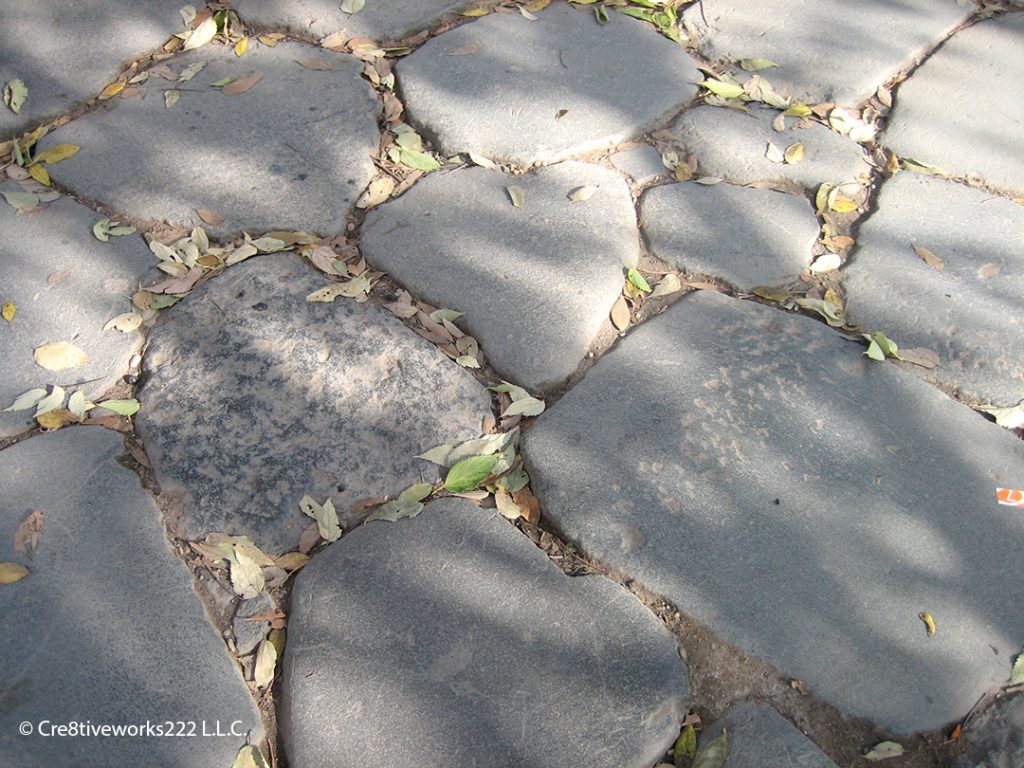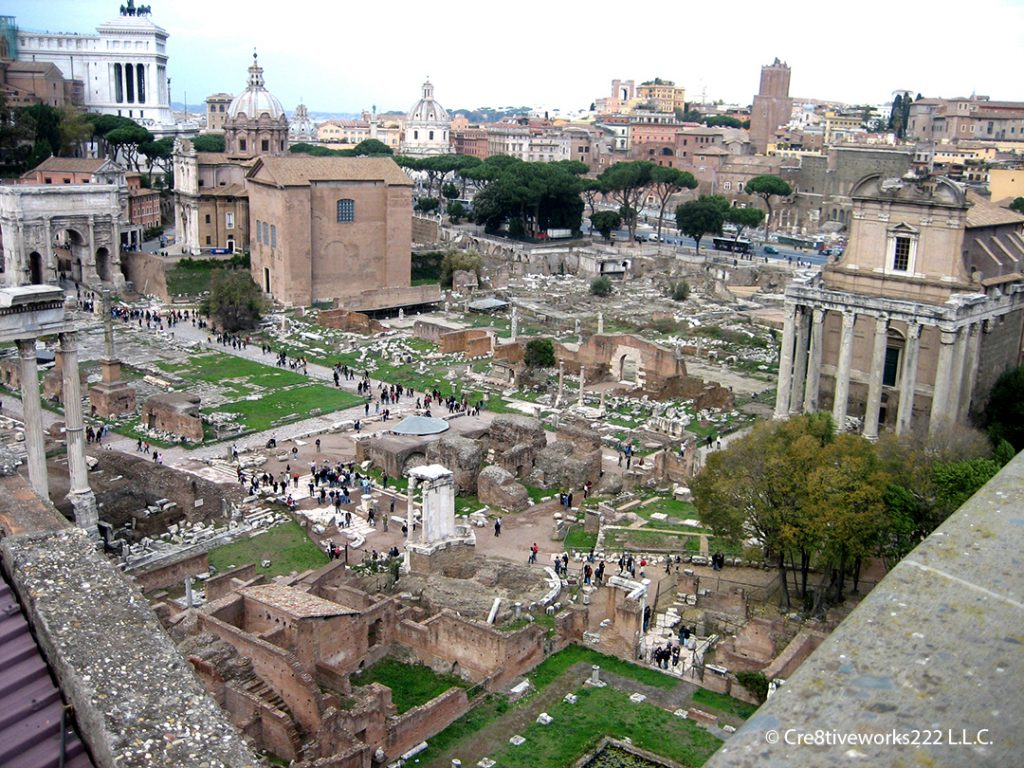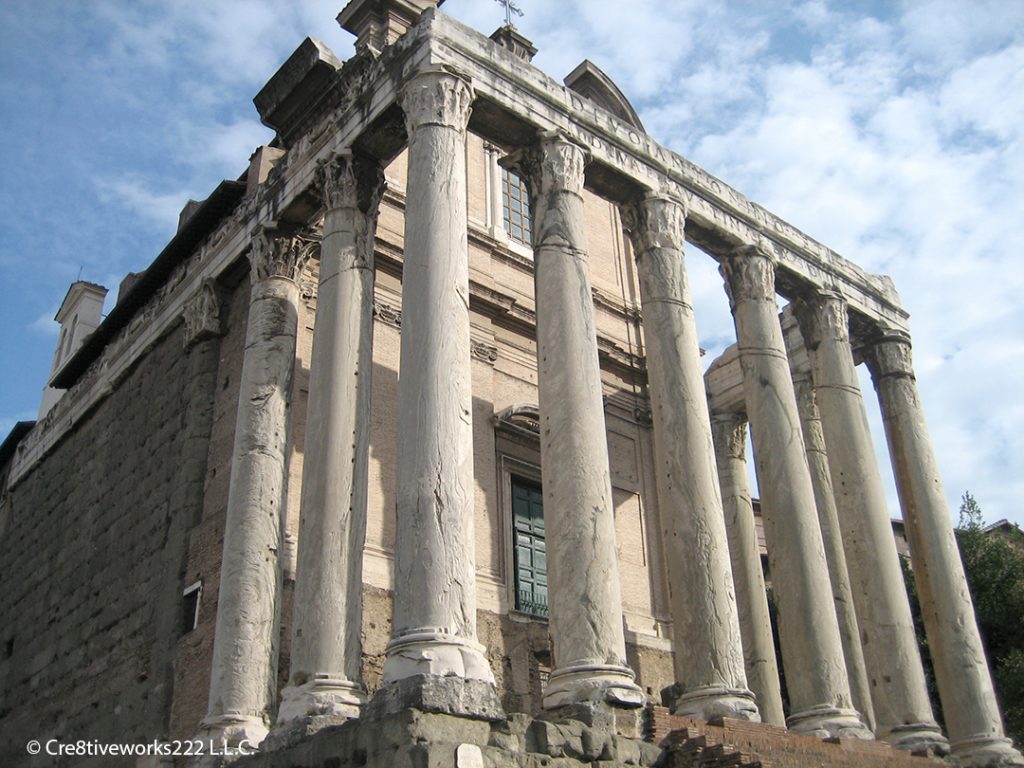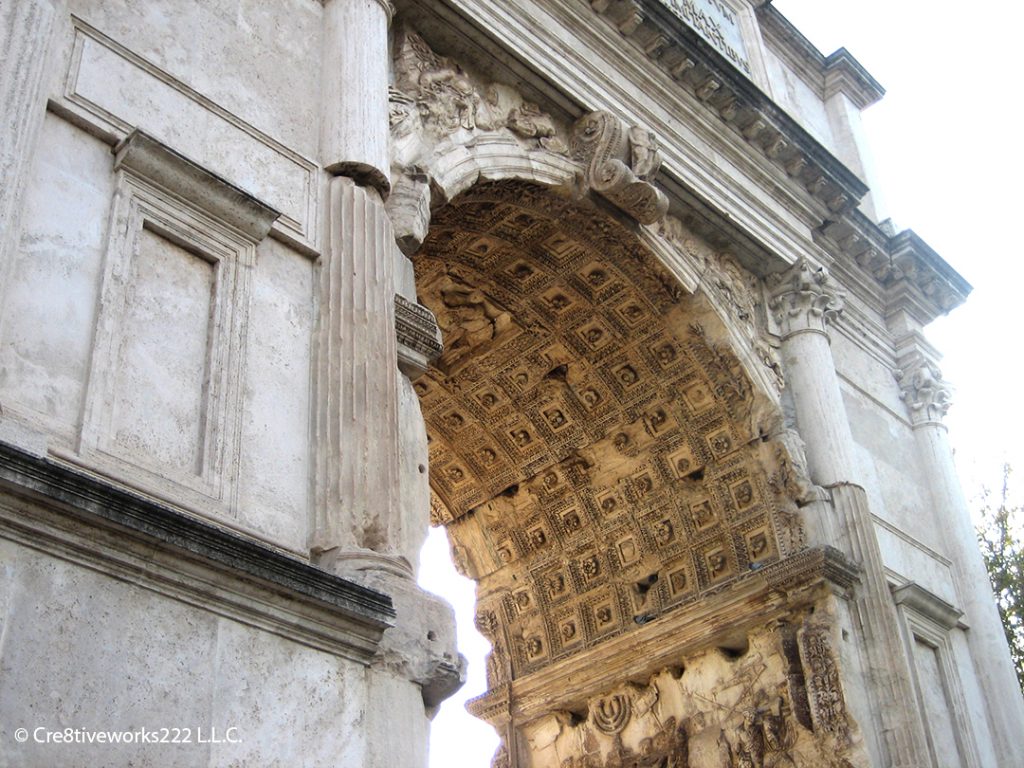About the Roman Forum
The Roman Forum, or plaza, was a rectangular area and the center of the political, religious, and marketplace in ancient Rome. It dates to around the 7th century BC. For centuries the Roman Forum was the center of Roman life. The Romans constructed statues, buildings, and monuments to commemorate Rome’s great men.
I’ve been to the Forum 3 times over the last ten years. Each time I visit, I experience and see something different. I go between mid-November and the end of December. Even then, there are still plenty of people in line waiting to wander the ancient streets and ruins. You can buy a pass that allows you access to both the Forum and the Colosseum. It will save you time standing in the long lines. And as always, comfortable shoes are a plus as you’re on your feet a lot.
It’s best to splurge and get the audio guide.
We did rent the guided audio tour on our visit. And brought a guide book that explains what each of the areas, buildings, and ruins are, as you’re not always able to tell just by looking. It was well worth the cost and you can choose the language you would like to listen to as you walkabout. If you walk through, you’ll be amazed at the surroundings, but you won’t get the complete view of the history and depth of Roman life so long ago.
After the fall of Rome, the area fell into ruins. People took the marble and stone for use in other buildings. The partially buried Forum became a pasture over the years. Not until the 18th century did archeologists start renovations of the Roman Forum and uncover many of the treasures you see today.
There are a few areas in the Roman Forum that I’d like to share, and you can see a couple in the photos above.
The Senate built the Arch of Titus after the Emperor’s death in memory of Jerusalem’s conquest in 70 AD. The arch stands about 50 feet tall and is the oldest surviving example of a Roman arch.
In 141 AD the Emperor Antoninus Pius began the Temple of Antoninus and Faustina. The Emperor dedicated the Temple to his deceased wife, Faustina the Elder. The Temple was later re-dedicated to both Antoninus and Faustina. In the seventh century, Romans converted the Temple to a Roman Catholic church, known as San Lorenzo in Miranda. The Temple is probably one of the best-preserved buildings in the Forum. It was not open when we were there, but maybe open a couple of hours on Thursdays.
The chief priest chose six young women to stay in The House of the Vestal Virgins. The priest chose them between the ages of 6 and 10. The chosen women took a vow of celibacy for 30 years. If they kept their vow, they would receive a pension and could then marry. They would have many privileges bestowed upon them. However, if they broke their vow of chastity, they were buried alive with a few days worth of food and water. You couldn’t kill a Vestal Virgin or bury them within the city of Rome. Instead, they were put in a room beneath the town and given food and water, therefore not spilling their blood. Read more about this as it’s fascinating.
Augustus built The Temple of Julius Caesar beginning in 42 AD to commemorate the spot where an angry crowd cremated Julius. Caesar was the first Rome resident to be deified (making divine) and so honored with a temple.
There are so many other buildings, columns, and ruins that you need to explore. What’s impressive is the stone paths are still original to where Julius Caesar and many other famous people walked. You have a chance to experience that here at the Roman Forum.
Post your tips, photos, and inspiration here and share your experiences with others.
Other great places to visit in Italy





